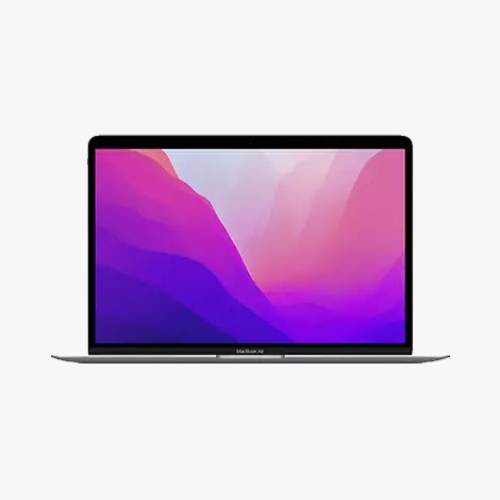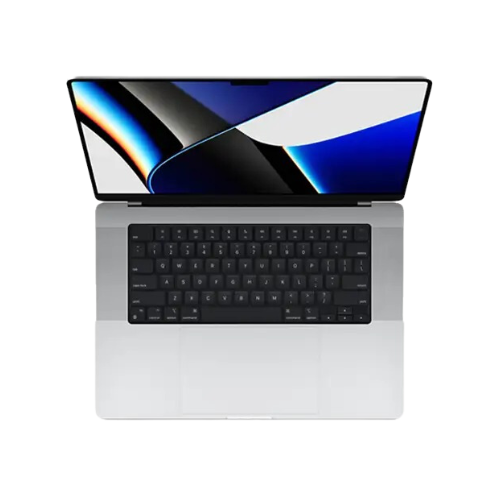Apple MacBook
The MacBook is a brand of Mac notebook computers designed and marketed by Apple Inc. that use Apple’s macOS operating system since 2006. It replaced the Power Book and iBook brands during the Mac transition to Intel processors, announced in 2005. The current lineup consists of the MacBook Air (2008–present) and the MacBook Pro (2006–present).
Two different lines simply named “MacBook” existed from 2006 to 2012 and 2015 to 2019. The MacBook brand was the “world’s top-selling line of premium laptops” as of 2015. ( Source Wikipedia )
Apple has introduced a new generation of the Apple MacBook with improved internal components each September—each labeled by Apple as a ‘Series’, with certain exceptions.

Source: Flatlife
Apple MacBook Models Evolution Timeline 2006-2023
Apple MacBook Release in 2006
2006: Apple releases the MacBook, with 13-inch display and Intel Core Duo processor.
Apple MacBook Release in 2008
2008: Apple releases the MacBook Air, First ultra-thin notebook computer with a 13.3-inch display, Intel Core 2 Duo processor, and 64GB solid-state drive.
Apple MacBook Release in 2012
2012: Apple releases the MacBook Pro with Retina Display First MacBook Pro with a high-resolution display with a 15.4-inch display and 2880×1800 pixel resolution.
Apple MacBook Release in 2015
2015: Apple releases the MacBook 12-inch notebook computer with a new Retina display, Force Touch trackpad, and new all-aluminum design.
Apple MacBook Release in 2016
2016: Apple releases the MacBook Pro with Touch Bar, New MacBook Pro with a Touch Bar and Touch ID. Also features a faster processor, brighter display, and longer battery life.
Apple MacBook Release in 2018
2018: Apple releases the MacBook Air with Retina Display, New MacBook Air released with a Retina display and Touch ID sensor. Also features a faster processor and longer battery life.
Apple MacBook Release in 2020
2020: Apple releases the MacBook Air M1 with 13-inch display, First MacBooks to feature Apple’s new M1 chip. M1 chip is significantly faster than Intel processors used in previous generations of MacBooks.
2020: Apple releases the MacBook Pro M1 with 13-inch display, First MacBooks to feature Apple’s new M1 chip. M1 chip is significantly faster than Intel processors used in previous generations of MacBooks.


Apple MacBook Release in 2021
2021: Apple releases the MacBook Pro 14-inch with M1 Pro Chip, powerful MacBooks ever made, feature Apple’s new M1 Pro, which is faster and more powerful than the M1 chip.
2021: Apple releases the MacBook Pro 16-inch with M1 Max, Most powerful MacBooks ever made, feature Apple’s new M1 Max chips, which are even faster and more powerful than the M1 Pro chip.


Apple MacBook Release in 2022
2022: Apple releases the MacBook Air 13- inch with M2 Chip, MacBook Air 13-inch Features Apple’s new M2 chip, which is faster and more efficient than the M1 chip. MacBook Air 13- inch also features new Liquid Retina XDR displays, a new MagSafe connector, and a new HDMI port.
2022: Apple releases the MacBook Pro 13-inch with M2 Chip, MacBook Pro 13-inch Features Apple’s new M2 chip, which is faster and more efficient than the M1 chip. MacBook Pro 13-inch also features new Liquid Retina XDR displays, a new MagSafe connector, and a new HDMI port.
2022: Apple releases the MacBook Pro 14-inch with M2 Pro and M2 Max Chip, MacBook Pro 14-inch Features Apple’s new M2 Pro and M2 Max Chip, which is faster and more efficient than the M2 chip. MacBook Pro 14-inch also features new Liquid Retina XDR displays, a new MagSafe connector, and a new HDMI port.
2022: Apple releases the MacBook Pro 16-inch with M1 Pro and Max Chip, MacBook Pro 16-inch Features Apple’s new M1 Pro and M1 Max Chip, which is faster and more efficient than the M1 chip. MacBook Pro 16-inch also features new Liquid Retina XDR displays, a new MagSafe connector, and a new HDMI port.




Apple MacBook Timeline, Generations, Models & Evalution based FAQs
The Apple MacBook releases can be traced back to 2006 with the introduction of the first Apple MacBook. Here is a comprehensive timeline of Apple MacBook releases:
2006:
MacBook Pro
January: 15-inch MacBook Pro with Intel Core Duo processors
April: 17-inch MacBook Pro with Intel Core Duo processors
MacBook
May: 13-inch MacBook with Intel Core Duo processors
2007:
MacBook Pro
June: 15-inch MacBook Pro with Intel Core 2 Duo processors
October: 17-inch MacBook Pro with Intel Core 2 Duo processors
MacBook
November: 13-inch MacBook with Intel Core 2 Duo processors
2008:
MacBook Air
January: 13.3-inch MacBook Air with Intel Core 2 Duo processors
MacBook Pro
October: 15-inch MacBook Pro with unibody design and Intel Core 2 Duo processors
November: 17-inch MacBook Pro with unibody design and Intel Core 2 Duo processors
2009:
MacBook Pro
January: 17-inch MacBook Pro with unibody design and Intel Core 2 Duo processors
June: 13-inch MacBook Pro with unibody design and Intel Core 2 Duo processors
MacBook
October: 13-inch MacBook with polycarbonate unibody design and Intel Core 2 Duo processors
2010:
MacBook Air
October: 11.6-inch and 13.3-inch MacBook Air with Intel Core 2 Duo processors
MacBook Pro
April: 15-inch and 17-inch MacBook Pro with Intel Core i5 and i7 processors
2011:
MacBook Air
July: 11.6-inch and 13.3-inch MacBook Air with Intel Core i5 and i7 processors
MacBook Pro
February: 13-inch MacBook Pro with Intel Core i5 and i7 processors
February: 15-inch and 17-inch MacBook Pro with Intel Core i5 and i7 processors and Thunderbolt ports
2012:
MacBook Pro
June: 15-inch MacBook Pro with Retina display and Intel Core i7 processors
October: 13-inch MacBook Pro with Retina display and Intel Core i5 and i7 processors
2013:
MacBook Air
June: 11.6-inch and 13.3-inch MacBook Air with Intel Core i5 and i7 processors
MacBook Pro
October: 13-inch and 15-inch MacBook Pro with Retina display and Intel Core i5 and i7 processors
2015:
MacBook
March: 12-inch MacBook with Intel Core M processors
MacBook Pro
May: 15-inch MacBook Pro with Retina display and Force Touch trackpad
2016:
MacBook Pro
October: 13-inch and 15-inch MacBook Pro with Touch Bar, Touch ID, and Intel Core i5 and i7 processors
2017:
MacBook
June: 12-inch MacBook with Intel Core M processors
MacBook Pro
June: 13-inch and 15-inch MacBook Pro with Touch Bar, Touch ID, and Intel Core i5 and i7 processors
2018:
MacBook Air
October: 13.3-inch MacBook Air with Retina display and Intel Core i5 processors
MacBook Pro
July: 13-inch and 15-inch MacBook Pro with Touch Bar, Touch ID, and Intel Core i5 and i7 processors
2019:
MacBook Air
July: 13.3-inch MacBook Air with Retina display and Intel Core i5 processors
MacBook Pro May: 13-inch and 15-inch MacBook Pro with Touch Bar, Touch ID, and Intel Core i5 and i7 processors
2020
MacBook Air
November: 13.3-inch MacBook Air with Apple M1 chip
MacBook Pro
November: 13-inch MacBook Pro with Apple M1 chip
2021:
MacBook Pro
October: 14-inch and 16-inch MacBook Pro with Apple M1 Pro and M1 Max chips
2022:
MacBook Air
July: 13.6-inch MacBook Air with Apple M2 chip
MacBook Pro
July: 13-inch MacBook Pro with Apple M2 chip
2023:
MacBook Pro
January: 14-inch and 16-inch MacBook Pro with Apple M2 Pro and M2 Max chips
Apple MacBooks have undergone a remarkable design evolution, epitomizing technological advancements and Apple’s pursuit of sleek minimalism. From polycarbonate to aluminum unibody, MacBooks embraced durability and elegance. Thinner and lighter designs like the MacBook Air epitomized portability.
Retina displays revolutionized display quality, while the Touch Bar showcased innovative input methods. USB-C and Thunderbolt adoption reflected industry standards for connectivity. Apple’s M1 chips marked a shift towards performance and hardware-software integration.
Throughout, Apple refined bezels, keyboards, and trackpads, demonstrating their attention to detail and user experience. In essence, MacBooks embody Apple’s commitment to innovation and user-centric design.
Here is a summary of the key features and improvements in each Apple MacBook generation from 2006 to 2023:
1. The Early MacBook Era (2006-2012)
MacBook Pro (2006-2012): Introduced Intel Core processors, FireWire ports, and the MagSafe power connector.
MacBook (2006-2012): Offered a more affordable option with Intel Core processors and a polycarbonate design.
MacBook Air (2008-2012): Pioneered ultraportable design with a slim aluminum unibody, prioritizing portability and battery life.
2. The Retina Display Revolution (2012-2015)
MacBook Pro with Retina Display (2012-2015): Introduced high-resolution Retina displays, setting a new standard for display quality.
12-inch MacBook (2015): Redefined portability with a fanless design, USB-C port, and Force Touch trackpad.
3. The Touch Bar Era (2016-2019)
MacBook Pro with Touch Bar (2016-2019): Introduced the Touch Bar, a dynamic touchscreen strip replacing traditional function keys.
MacBook Air (2018-2019): Upgraded to Retina display, improved performance, and introduced Touch ID.
4. The Apple Silicon Transition (2020-Present)
MacBook Air and MacBook Pro with M1 chip (2020): Apple’s own M1 chips revolutionized performance and power efficiency.
MacBook Pro with M1 Pro/Max chips (2021): Further enhanced performance with more powerful M1 variants and expanded connectivity options.
MacBook Air and MacBook Pro with M2 chip (2022-2023): Continued performance improvements with the M2 chip, refined designs, and enhanced features.
Here are some tips on how to identify the different Apple MacBook models by their appearance:
Size: MacBooks come in various sizes, from the compact 12-inch MacBook to the larger 16-inch MacBook Pro. Measure the screen diagonally to determine the size.
Ports: The type and number of ports can help identify the model. Older MacBooks had MagSafe power connectors and various ports like USB-A, HDMI, and SD card slots. Newer models primarily use USB-C/Thunderbolt ports.
Keyboard: The keyboard design has evolved over time. Older MacBooks had traditional function keys, while newer models may have a Touch Bar or Touch ID sensor.
Display: Retina displays are standard on newer MacBooks, offering sharper visuals. Older models have lower-resolution displays.
Color: MacBooks are typically available in silver, space gray, or gold. Some limited editions may have different colors.
Model Identifier: The model identifier is printed on the underside of the MacBook. It can be used to accurately identify the specific model.